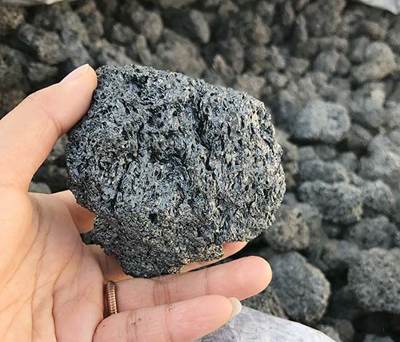
Calcined petroleum coke, or petcoke, is a by-product of the petroleum refinery process. It has many industrial applications. This solid fuel is used in the production of electricity, or for the generation of thermal steam and process steam during refining. The solid fuel is also used as a source for carbon black which can be found in many products such inks paints plastics. It can also be used as a raw material for making titanium dioxide, which is commonly found in sunscreens and some paints.
The unprocessed version of petcoke resembles coal, but has less ash. Unprocessed petcoke contains fine, airborne particles. This poses a risk to people who live in the areas that it's stored. In extreme weather, this black dust may be transported into the home. This can cause respiratory issues through inhalation.
Sulfur dioxide is produced when calcined petrol coke for energy. This can lead to respiratory problems in humans. This also causes fine particulate to be released into air which can irritate lungs or increase asthma and heart diseases. It can also cause water contamination, resulting in a reduction of plant growth.
Oxbow’s calcined coke is primarily used by primary aluminum producers for the extraction of alumina and recarburization. Carbon black is produced from a small amount of calcined petroleum coke. This is an important ingredient for a variety of commercial and consumer products, such as paints, inks, and plastics. Calcined petroleum coke is also being researched as a fuel for fuel cells, which generate electricity through the chemical reaction of hydrogen and oxygen.

For calcined oil coke production, plants heat petcoke up in shaft kilns and rotary ovens. They produce an extremely dense fuel, with high levels of carbon. For the purpose of meeting energy needs, and maintaining this high temperature, the kilns will release SO2 from their smokestacks. Scrubber systems can filter SO2 emissions, and are becoming more common as states adopt stricter laws regarding environmental protection.
While a variety of pollutants are emitted during the processing and combustion of petcoke, the primary concern in a residential setting is the potential for inhalation of the black dust that can accumulate on houses near stockpiles. This fugitive dust can aggravate pre-existing lung ailments, and it can be toxic to the liver and kidneys when inhaled long-term.
Inhalation of particulate material with an airdynamic diameter less than 0.3 microns is not considered to pose a significant risk for residential residents. This conclusion was derived from studies conducted on lab animals.

Write a Message